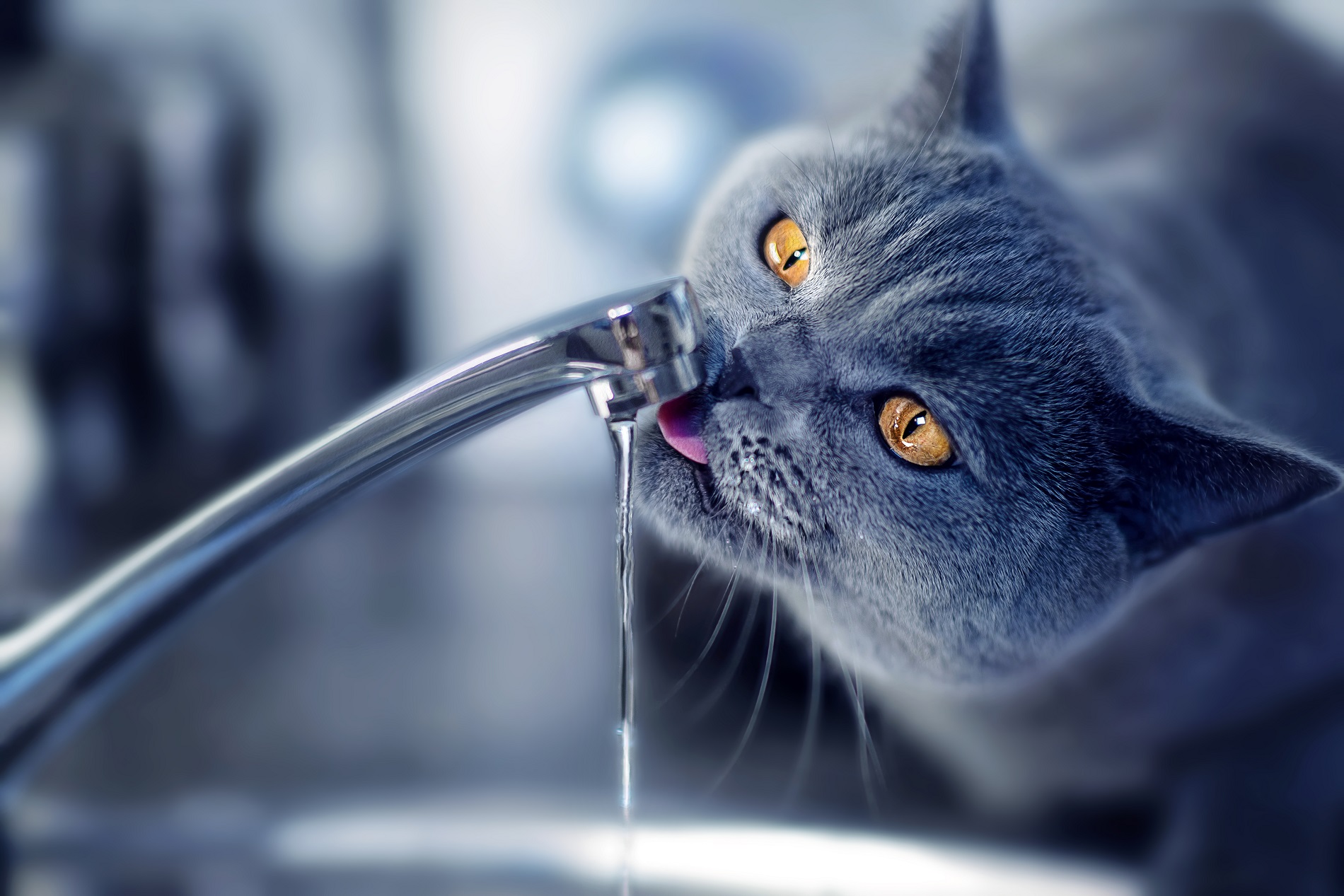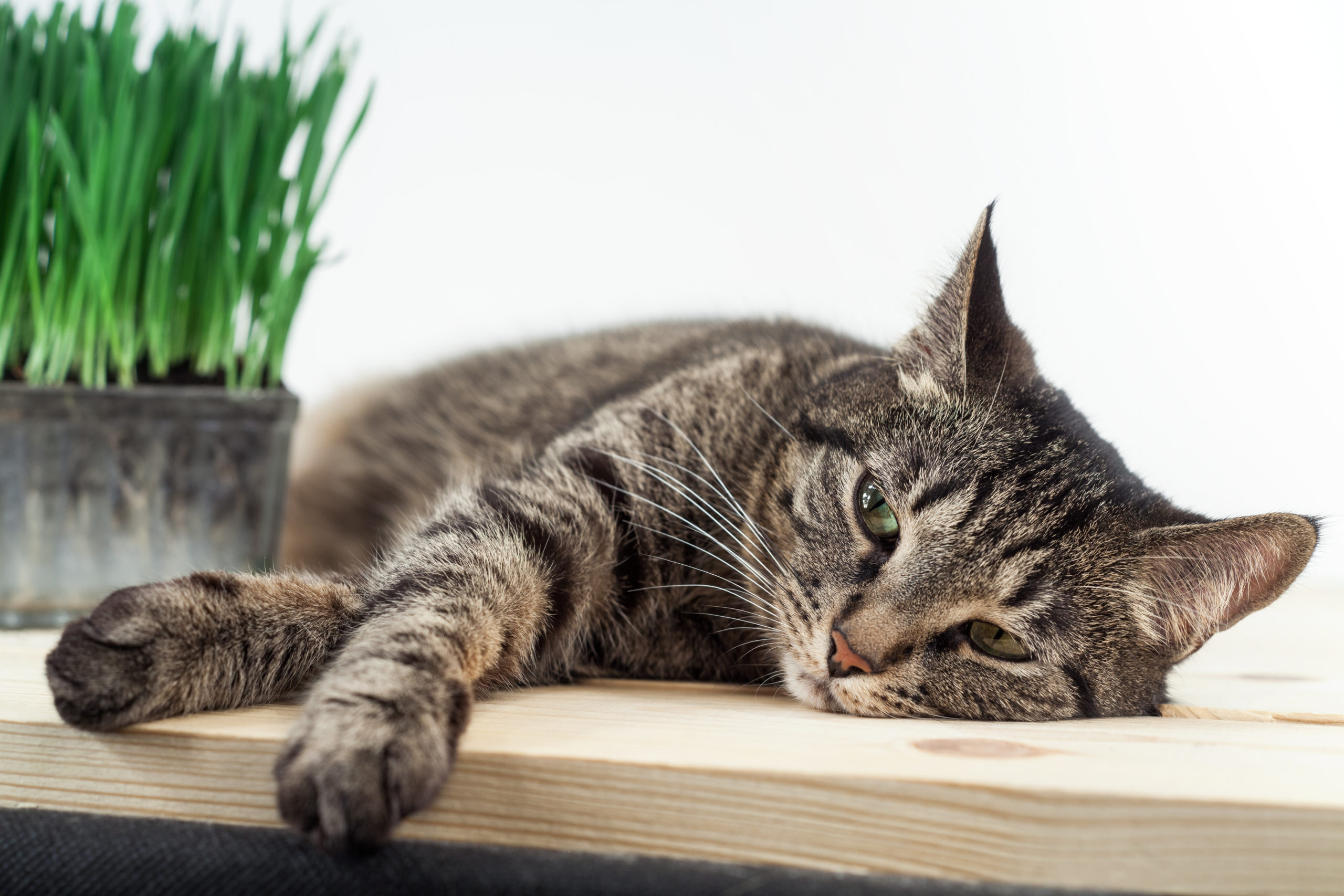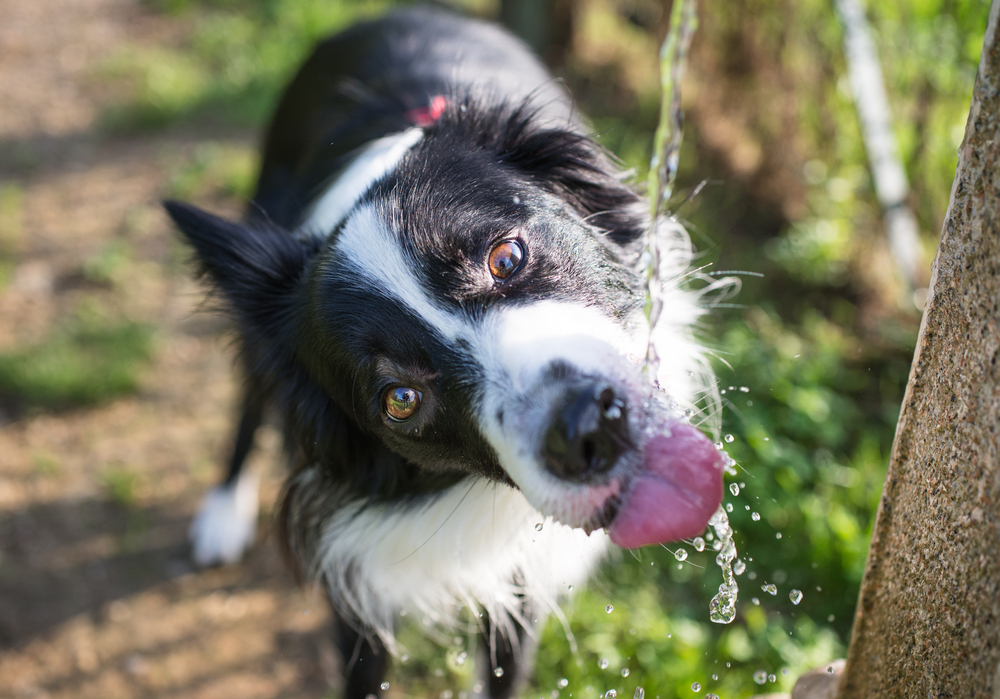Receiving the news that your dog has kidney disease can be scary and confusing for pet parents. Kidney disease occurs on a spectrum – some cases are an emergency, and your dog may be feeling very sick, vomiting, and acting lethargic.
In other cases, you just may note that the water bowl is empty more often than normal, and your dog is having to urinate frequently. And to complicate things more, kidney disease may be asymptomatic early in its course, only to be discovered via annual blood and urine testing. Every dog’s journey with kidney disease will be highly dependent on the cause, severity, progression, and treatments.
Managing kidney disease hinges on understanding all of the ways that the kidney supports the body. Kidneys are made up of millions of tiny cellular units called nephrons. These little nephrons are the true workhorses of the kidney and perform many essential functions for the body.
There are a variety of medical problems that cause nephrons to become damaged and result in kidney failure in dogs. Unfortunately, once healthy kidneys are permanently damaged, they cannot regenerate healthy tissue.
The kidneys are so good at compensating for damaged nephrons that by the time we start to see evidence of kidney damage on your dog’s lab work, at least 2/3 of the kidney’s functional capacity is already diminished! At that time, it is important that treatment is initiated to preserve as much kidney function as possible.
Let’s talk more about what the kidneys do.
What Do Dog’s Kidneys Do?
The kidneys are responsible for many functions that are crucial to overall health. One such function is removing excess waste, fluids, and toxins. This keeps the body healthy by preventing buildup.
When the kidneys can no longer filter out these substances, it is a sign that they aren’t working properly. Kidneys also control blood pressure and pH levels, help produce red blood cells and support bone health.
So what are the signs of this vital organ failing?
What Are the Clinical Signs of Chronic Kidney Disease?
Some of the most common symptoms include weight loss, decreased appetite, vomiting, increased or decreased urination, and thirst. You might also notice your dog’s gums becoming pale or that their breath has a chemical scent. Additionally, they might have trouble walking or staying balanced.
This wide range of symptoms will likely worsen as the disease progresses.
What Causes Kidney Failure in Dogs?
Now that you know the signs, you might be wondering how your furbaby became ill. Several things can cause kidney failure, ranging from damage to specific parts of the kidneys to ingesting household products that may contain dangerous toxins.
Let’s dive in:
Kidney Damage
There are many ways in which the kidneys could become damaged. Here are a few possible infections and other issues that may have caused your dog’s kidney failure:
- Glomerular Disease: This disease occurs when the part of the kidney responsible for the filtration of waste products, called the glomerulus, becomes inflamed. The inflammation damages surrounding tissues within the kidney, which leads to the development of chronic kidney disease.
In the early stages, your dog may not exhibit symptoms, but it is vital to seek treatment as soon as possible to slow the progression of this illness.
- Nephrolithiasis: Nephrolithiasis is a term used to describe kidney stones. Kidney stones may not be painful initially but can become painful if they result in a blockage or infection.
- Blockage: If kidney stones become fragmented, they can move into the ureter along with urine as it reaches the bladder. The fragments could cause a blockage if they become stuck within the ureter, making it difficult for urine to leave the bladder. Consequently, the kidneys become enlarged and damaged.
- Leptospirosis: This is a treatable bacterial infection that can cause acute kidney injury but may also contribute to chronic kidney disease. Prompt management of this infection is best to ensure a favorable outcome.
Household Products and Toxins
Some products you use in your home can be hazardous for dogs.
A few common household items that may contribute to kidney failure include:
Grapes and Raisins
Grapes and raisins are both poisonous as they stay in the stomach for an extended period of time and aren’t processed correctly within your dog’s gastrointestinal tract.
The exact amount needed to inhibit kidney function is unknown, but you should avoid giving these fruits to your dog altogether to minimize the risk.
Antifreeze
Antifreeze can be found in products such as paint, motor oil, hydraulic brake fluid, and radiator coolant, more commonly referred to as automotive antifreeze.
Cardiac Medications
Some heart medications include beta blockers and calcium channel blockers, both of which are used in human and veterinary medicine to effectively treat high blood pressure and cardiac disease. Poisoning due to these medications can lead to a low heart rate and acute kidney injury.
Non-Steroidal Anti-Inflammatory Medications
It is not safe to give your dog over-the-counter medication meant for humans without first receiving guidance from your veterinarian upon consultation since many human medications are harmful to animals. This includes non-steroidal anti-inflammatory medications such as Advil and Motrin. These can cause intestinal ulcers and acute kidney injury.
Vitamin D3
Vitamin D3 is extremely harmful to dogs, and they could rapidly develop an acute kidney injury if this vitamin is ingested. Vitamin D3 can raise calcium and phosphorus levels, otherwise referred to as hypercalcemia and hyperphosphatemia. Consequently, the body’s soft tissues within the heart, kidneys, and GI tract will harden.
Several items in your home contain vitamin D3, including rat poison, prescription vitamins, multivitamins, and omega fatty acid supplements.

Chronic Kidney Disease and Age
The age at which dogs could develop chronic kidney disease varies based on age and size.
Large dogs might show early signs of CKD as young as seven years of age because they tend to have a shorter life span than smaller breeds. In contrast, small dogs live longer and may not show signs of CKD until they are around ten to 14 years of age.
How Is CKD Diagnosed?
To diagnose CKD, your vet may conduct several tests, including three different blood tests, as well as urine testing, radiography, ultrasonography, and testing for infectious diseases.
Here’s what you can expect:
- Radiography: This test uses X-rays to examine your dog for tumors or kidney stones. It might also help detect other health problems.
- Ultrasonography: Ultrasounds are safer than radiographs because they use sound waves instead of radiation. However, both tests are essential: ultrasounds take images of the body’s tissue differently than radiographs.
- Blood Urea Nitrogen: The BUN test is a blood test that is usually incorporated into blood panels. Elevated results are only shown on this test when kidney function has decreased by 60 to 70 percent, making it highly effective at uncovering kidney problems.
- Blood Creatinine: Similar to the BUN test, the blood creatinine test will only show elevated results at 60 to 70 percent decreased kidney function. Creatinine is an amino acid in muscle protein. Both tests are influenced by factors unrelated to kidney function, such as exercise, diet, and muscle mass. For this reason, these tests can provide an accurate diagnosis after the disease has progressed, but a final blood test is needed to diagnose CKD in its early stages.
- SDMA Test: Symmetric dimethylarginine tests for an amino acid called arginine. SDMA levels elevate well before BUN and creatinine, helping detect kidney failure early on. Your dog could be tested for phosphorus and calcium levels in their blood.
- Urinalysis: Testing urine can provide information about the status of the kidneys that may not have been apparent in blood testing. This includes the detection of protein loss within urine, the presence of bladder stones, bleeding, and inflammation.
What’s the Outlook? The Future for Dogs With Kidney Disease
CKD is progressive, but proper treatment can allow dogs to live for months to even years with the diagnosis while still having a good quality of life. Starting treatment as soon as possible can help them live longer.
Geriatric Degeneration
As your dog ages, they could develop health issues, including CKD. We’ll discuss a few of them and their symptoms below.
Degenerative Joint Disease
This disease is also known as Osteoarthritis. Dogs can develop arthritis in old age, just like humans. Typically, this affects the function of any weight-bearing joints such as the knees and hips, which erodes the body’s cartilage over time. Osteoarthritis is progressive, but treatment can help ease your dog’s pain while slowing progression.
Dementia
Older dogs may begin to show signs of cognitive dysfunction, including dementia. You’ll want to see your veterinarian for an official diagnosis if you notice your dog doing things like pacing, having accidents, appearing confused or lost, or withdrawing from the family. Dementia cannot be cured, but your vet can prescribe medications or supplements that might make these symptoms more manageable.
Blindness
Dogs can lose their vision as they get older, and while there is no way to reverse it, their other senses can help them adapt. It is best not to rearrange your furniture so that they won’t be confused about their surroundings at home and keep them on a leash when you take them outside.
Diabetes
Canine diabetes is a frequent concern in elderly dogs and can present itself in one of two ways. The first and most common is insulin-deficient diabetes. This occurs when the pancreas is not functioning properly, preventing the body from producing enough insulin.
The second form is insulin-resistant diabetes, during which insulin is produced but is not used properly within the body. Diabetes can lead to abnormal blood chemistry, resulting in damage to organs, including the kidneys. If your dog has diabetes, they may experience weight loss, increased appetite and urination, and increased thirst.
Symptoms of End-Stage Renal Disease in Dogs
When your dog enters the end stages of kidney failure, their symptoms may worsen. Some of these could be similar to ones they experienced in prior stages of CKD, while others were not present before the final stages.
Review a few of them below:
- Uremia: When waste productsbuild up in the body, this gives your dog’s breath a strong ammonia scent
- Mouth Ulcers: Uremia could cause painful ulcers in your dog’s mouth.
- Dull and shedding coat: Your dog might begin to shed more than usual, and their coat may appear unkempt.
- Bloodshot eyes: During the final stages, the eyes may seem bloodshot.
- Loss of body fat and muscle mass: The weight loss brought on by kidney failure can cause them to appear emaciated as they lose both muscle mass and body fat.
- Dehydration: Although kidney failure causes increased thirst, it also causes frequent urination, leaving your dog constantly dehydrated.
- Dry and pale gums: The gums could become pale and extremely dry due to the lack of fluids in your dog’s body.
- Fatigue and lethargy: Your dog’s energy levels may decrease, causing them to sleep more and become less active.
- Slow heart rate and trouble breathing: During prior stages, the heart rate may increase, but it becomes slower in the final stages. However, blood pressure could become elevated. Difficulty breathing could also arise.
- Anemia: Anemia is the lack of healthy red blood cells in the body, resulting in reduced oxygen flow to the organs.
- Tremors and shaking: Your dog might experience shaking, tremors, and loss of balance.
- Seizures: Recurrent seizures are a major indication that your dog is in the final stages of kidney failure.
- Depression and disorientation: Your dog may seem confused and lose interest in things they usually enjoy.
Acute or Chronic?
Acute Kidney Failure (acute renal failure) occurs when there is a sudden injury to the kidney tissue due to causes like toxin ingestion or infections like Lyme or Leptospirosis. This damage occurs quickly over minutes, hours, and days. Acute Kidney Failure is an emergency needing immediate treatment.
If the damage happens more slowly over time due to unknown reasons and old age, it is referred to as Chronic Kidney Failure (chronic renal failure). Treatment for this type of kidney disease involves long-term management to prevent progression and further loss of those important nephrons.
End-stage chronic kidney failure occurs when the damage is in such an advanced state that other body systems are also affected, and the condition of the dog is very poor overall.
Treatment of acute and chronic kidney failure are similar yet different since one happens on a much faster timeline than the other! How do we tell the difference between acute and chronic?
Using information from the pet parent about recent changes in your dog that you have observed at home, physical exam findings, blood and urine test results, blood pressure readings, and other diagnostic options like x-ray and abdominal ultrasound, your veterinarian can distinguish which type of kidney issue your dog is experiencing.
When a kidney injury is diagnosed, the goals of treatment are to address the original cause of the damage, restore as much kidney function as possible, and slow the damage and further loss of function. Some treatments also directly target the buildup of certain wastes in the bloodstream, aid in hydration, and maintain electrolyte balances.
How Is Acute Kidney Failure Treated?
The kidneys are very fragile and can be rapidly and severely injured by infections, toxins (grapes, raisins, antifreeze), and severe dehydration (heat stroke and shock). Without treatment, acute kidney failure is life-threatening. If the kidneys experience this sudden injury, the sooner treatment is received, the better the outcome!
Severely ill dogs can be expected to be hospitalized for several days. In some cases, acute kidney failure can be reversed; the kidneys can be jump-started again to resume their responsibilities.
In other cases, treatment is ineffective or not initiated in time, and the kidneys will suffer a degree of permanent damage.
Possible Treatment Plans for Acute Kidney Failure in Dogs
If your dog is diagnosed with acute kidney failure, here are some treatments that may be offered:
- Treatment for the primary disease causing the acute kidney failure (such as antibiotics for an infection of the kidneys)
- Intravenous (IV) Fluids: used to restore electrolytes and hydration and help the kidneys continue to flush out the wastes and toxins from the bloodstream.
- Urinary Catheterization: measuring the urine output is key in monitoring how the kidneys are rebounding and responding to treatment.
- Medications: Antibiotics, anti-nausea medications, gastro protectants, appetite stimulants, blood pressure medications, cardiac support, and pain medications if your dog is painful
- Temporary Feeding Tube: Many dogs feel lousy and do not want to eat. A feeding tube can help deliver nutrition directly to their stomach until they are ready to eat on their own.
- Monitoring: Bodyweight, urine output, electrocardiogram, blood pressure, temperature, and urine and blood testing will assist your veterinarian in closely monitoring your dog’s status.
Are There Renal Replacement Therapies for Dogs?
AskVet Tip: Unfortunately, treatments called “renal replacement therapies” (aka dialysis and kidney transplants) are not widely available options to treat kidney failure in animals. Some veterinary hospitals do have dialysis capabilities, but at this time, it is not routinely used and is very expensive.
For more information, refer to your veterinarian for dialysis options at referral centers and large veterinary hospitals in your area.
Acute kidney failure is a very serious and potentially fatal condition. Prognosis often depends on the initial cause of the kidney injury and how quickly appropriate treatment is begun.
Some dogs will beat the odds and have an excellent response to treatment, resuming their regular healthy lives! Unfortunately, other dogs will suffer permanent damage to the kidneys and live with some level of chronic renal failure, requiring ongoing care for the rest of their lives.
Treatment Options for Chronic Kidney Disease
Chronic kidney disease has a much slower progression and often takes place over months and years rather than hours and days. Since chronic kidney disease occurs from mild to severe, the International Renal Interest Society (IRIS) created a standard set of guidelines for treating chronic kidney disease based on the classified stage.
What Are the Four Stages of IRIS?
The IRIS has 4 stages – stage one being very mild disease and stage 4 being severe end-stage disease. IRIS staging is based on a complete assessment of kidney function, which includes blood and urine test results and blood pressure measurement. (You may hear your veterinarian discuss blood values such as creatinine, BUN, SDMA, and urine protein creatinine ratio!)
With mild kidney disease, only a few treatments may be needed to aid the nephron with filtration, maintain hydration, lower blood pressure, and balance electrolytes.
With advanced kidney disease, the filtering power of the nephron is greatly diminished, causing wastes and toxins to build up in the bloodstream affecting the function of other organs around the body.
Possible Treatments for IRIS
The following are some commonly recommended treatments for dogs with IRIS Stages 1-4 kidney disease in order to improve or maintain kidney function and quality of life for as long as possible:
- Treat any primary disease-causing or complicating condition (such as high blood pressure)
- “Renal diet”: Prescription diets with decreased protein and restricted phosphorus and sodium content to help support struggling kidneys and reduce the amount of work they have to do (Hill’s K/D and K/D Early Support, Purina Pro Plan NF and NF Early Care, Royal Canin Renal Support and Early Renal Support)
- Supplements: Phosphorus binders (Epikatin, Aluminum Hydroxide), vitamin D supplements (calcitriol), potassiumsupplements, probiotics (Azodyl), omega-3 fatty acid supplements (fish oil)
- Medications: Blood pressure medications (enalapril, telmisartan, amlodipine), anti-nausea medications (cerenia, ondansetron), appetite stimulants (mirtazapine, entyce), antacids (omeprazole, famotidine)
- Intravenous or Subcutaneous Fluids: Maintain hydration and correct electrolyte imbalances. IV fluids can be given in the hospital and fluids under the skin (subcutaneous, or “SQ” fluids) can be given at home.
- Erythropoietin: Injectable erythropoietin may become necessary if the red cell count becomes too low.
- Feeding tube: Sick dogs sometimes do not want to eat, so a feeding tube can provide nutrition directly into the stomach for a period of time until he starts to feel better
How Can Kidney Failure Be Prevented?
The best thing you can do to reduce the chances of canine kidney failure is to schedule regular vet visits. This makes it less likely that they will develop any conditions you would be unaware of. When they are examined by your vet often, routine tests such as blood work and urine tests may detect early signs of kidney disease and other illnesses.
Your dog’s diet is another aspect of preventing kidney disease is keeping your dog on a healthy diet. Adding probiotics can support good bacteria that are already in their system. Feeding your dog high-quality food with protein as the main ingredient can help support kidney function.
Providing your dog with clean drinking water will also lessen the bacteria they consume. If your dog is susceptible to kidney problems or other issues, your vet might recommend specific foods to support kidney health.
You should always talk to your vet when navigating a CKD diagnosis, as they can assist you in coming up with a treatment plan that best suits your dog.
Goals of Treatment
The goals of treatment are to address any disease responsible for damaging the kidneys in the first place, support the remaining kidney function, and address any fluid, electrolyte, and mineral imbalances that arise due to the compromised kidneys.
Pet parents can take an active role in helping their pups by closely adhering to treatment plans and following up with the recommended recheck appointments and blood/urine tests.
The response to treatment can vary widely between dogs – some kidney function can improve with the above treatments allowing dogs to live an active and happy life for many years.
Other dogs may progress quickly and develop debilitating issues resulting in a poorer quality of life. Keeping your dog feeling good for as long as possible is the outcome we all strive for!
Our AskVetCertified Pet Lifestyle Coaches™ (CPLC) are available to discuss all of your pet’s needs 24 hours a day, 7 days a week. Whether you have an immediate need or are looking to improve your pet’s overall wellbeing, just sign into your account, and one of our friendly and knowledgeable veterinary experts will attend to your needs; no reservation required!
Join AskVet to discuss any lingering questions you may have and formulate a lifestyle plan totally tailored to any pet in your household.
Sources:
Kidney Failure in Dogs – Signs & Symptom | Rossmoyne Animal Emergency Trauma Center | Mechanicsburg.
Kidney Failure in Dogs | Kirrawee Vet Hospital | NSW
Renal Failure in Dogs: Causes, Symptoms & Treatment | Flat Rock Emergency Vet
Hypercalcemia in Dogs and Cats – Endocrine System | Merck Veterinary Manual
Hyperphosphatemia in Animals – Metabolic Disorders | Merck Veterinary Manual
Written by:
Alexa Waltz, DVM
Dr. Waltz was raised near the beaches of Southern California but has spent her adult life living all over the beautiful United States while serving in the military and as a military spouse. She left California for the first time to pursue a career as a veterinarian at Louisiana State University School of Veterinary Medicine and graduated as a Doctor of Veterinary Medicine in 2006. She was accepted into the US Army Health Professionals Scholarship Program during vet school and upon graduation spent her military years as a veterinarian in San Diego working for the US Marine Corps and US Navy Military Working Dog programs as well as caring for pets of service members. After her military service, she became a civilian veterinarian and continued as a small animal general practitioner at clinics in California, Rhode Island, Colorado, and Maryland. Dr Waltz loves to see her “in person” patients just as much as communicating with and assisting pet parents virtually on AskVet. Dr Waltz is also a Mom to 3 humans, 2 guinea pigs, and 1 Australian Shepherd and in her spare time she loves traveling, adventures, exercising, and doing just about anything out in nature!





















